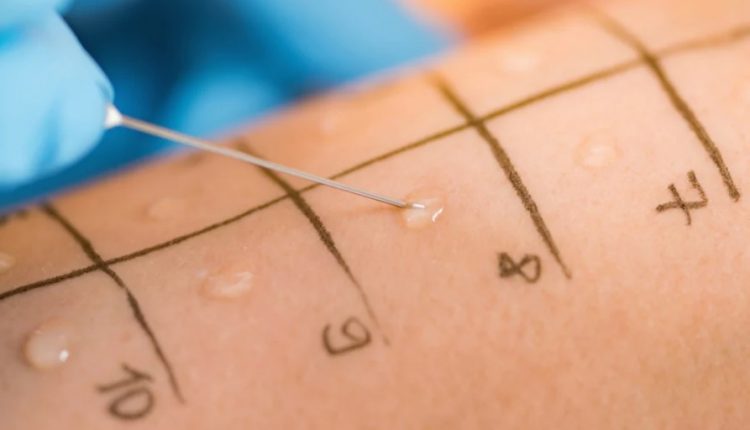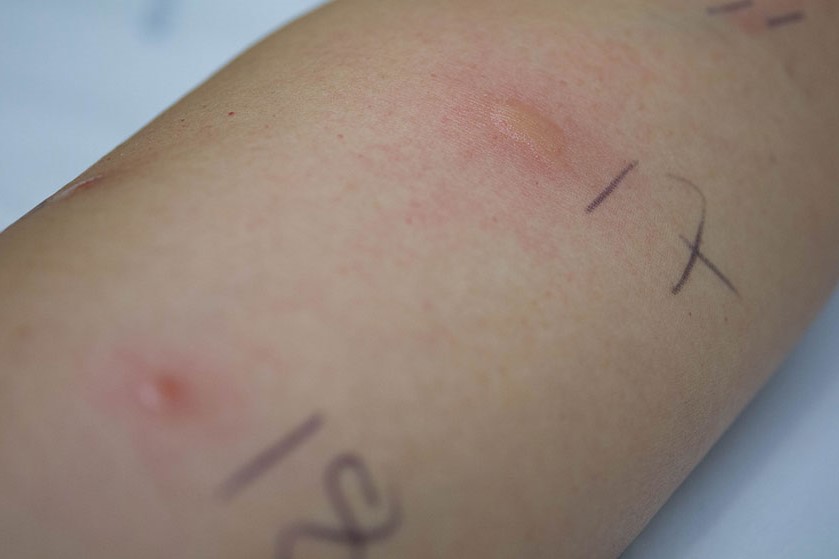
Respiratory or food allergies: what is the Prick Test and what is it for?
Prick tests are performed to diagnose respiratory or food allergies using purified allergen extracts in vials. Each vial contains a solution with a single allergen
But how is the prick test performed? And what is the best time to perform it?
What is a prick test
The prick test is a first-level allergometric examination used to identify the possible culprits of a respiratory allergy (caused, for example, by pollen, animal hair, dust mites or mould) or a food allergy.
The choice of allergens to be tested is based on the patient’s reported medical history.
If a respiratory allergy is suspected, prick testing is prescribed in individuals with persistent or seasonal symptoms suggestive of asthma and oculorhinitis.
In the case of a suspected food allergy, however, a prick test is prescribed when a patient experiences symptoms such as itching, redness, swelling of the lips, swelling of the oral cavity, urticaria, angioedema, asthma, oculorhinitis, gastrointestinal disturbances and, in the most severe situations, anaphylactic shock.
For a successful prick test it is advisable to discontinue any antihistamine treatment for 7 days prior to the test. The prick test is a quick, safe and painless test.
How the prick test is performed
The skin of the forearm is brought into contact with an allergen and then lightly pricked with a disposable lancet.
A period of 15 to 20 minutes is then waited, after which the skin reaction obtained at each allergen positioned for testing is assessed.
The test result is considered positive if, at the point where the specific allergen has been placed in contact with the skin, there is a slight swelling of the skin and a slight itching, similar to what happens if you are bitten by a mosquito.
The medical specialist will assess the reliability of the test when it is performed on the basis of the skin reaction to histamine, the substance used for the control.
When to perform the prick test
The prick test can be performed at any time of the year, with no preferred time of year.
It is a misconception that patients with respiratory symptoms from a possible allergic cause (such as rhinitis, conjunctivitis and asthma) that have not yet been investigated should wait until the end of the season in which the symptoms developed.
On the contrary, if respiratory allergies are suspected, a prick test should be performed as soon as possible so that the specialist can diagnose the allergy and recommend the most appropriate treatment.
The same applies to food allergies. If you suspect a food allergy, it is essential that you contact an allergist as soon as possible and seek the advice of a competent specialist without embarking on diets that may be dangerous to your health or running into diagnostic tests that are not scientifically valid.
In a few cases, however, the prick test must be delayed for some time to be reliable.
This is the case, for example, if antihistamines are being used, topical steroids are being used, the skin is not intact or there is marked dermographism.
In such cases, the specialist may consider performing a different type of test, the RAST test, in which specific IgE is sought by taking a blood sample.
A safe test at any age
The test is performed on patients of all ages, including children under 3-4 years of age.
It is a test that can be repeated throughout life because, with the development of the immune system and changes in environmental exposure, allergic individuals can change the result of their skin positivity.
The prick test, therefore, is an important tool that allows the allergist to make the appropriate diagnosis and assess the best therapies tailored to the needs of each patient.
Read Also:
Ozone Therapy: What It Is, How It Works And For Which Diseases It Is Indicated
Drug Allergies: What Are The Symptoms And How Are They Diagnosed?




